Nagasaki: 30 Things to Do, Dining, Hotels, and More

Located in Kyushu, Nagasaki Prefecture is famous for its international atmosphere, whose origins can be traced to the history of this port city. This article features the best things to do in Nagasaki, from places to visit to restaurants and cafes, as well as hotels.
Explore Nagasaki
Nagasaki Prefecture is located in the northwest area of the Kyushu region. Nagasaki is famous for its exotic cityscape, influenced by both the Eastern and Western cultures. Along with Hiroshima, it is also known as a city devastated by an atomic bomb during the Second World War.
There are historic places all around Nagasaki, and this article features the must-visit spots, along with dining recommendations, and hotels.
Nagasaki: Things to Do, Dining, Hotels
2. Glover Garden
3. Nagasaki Shinchi Chinatown
4. Peace Park
5. One-Legged Torii Arch at Sanno Shrine
6. Oura Church
7. Chinzei Taisha Suwa Shrine
8. Nagasaki Atomic Bomb Museum
9. Oranda Zaka
10. Nagasaki Confucian Shrine
11. Nabekanmuriyama Park
12. Mount Inasa
13. Megane-Bashi
14. Ryoma-dori
15. Siebold Memorial Museum
16. Huis Ten Bosch
17. Gunkanjima
18. Tenkaiho
19. Hirado Dutch Trading Post
20. Unzen Onsen
21. Misojien
22. Goto Archipelago
Guided Tours of Nagasaki
23. Romantic Nagasaki: Historical Charms and Seaside Views
24. Street Food Tour of Nagasaki
25. Japanese Tea Tour in Nagasaki
Dining in Nagasaki: Cafes and Restaurants
26. Cafe Hirai
27. Menya Always
28. Kozanronhonbu
29. Nagasaki Dejima Wharf
30. Nagasaki YoHira
Hotels in Nagasaki
Almas Guest House
Nagasaki Marriott Hotel
i+Land Nagasaki
1. Dejima
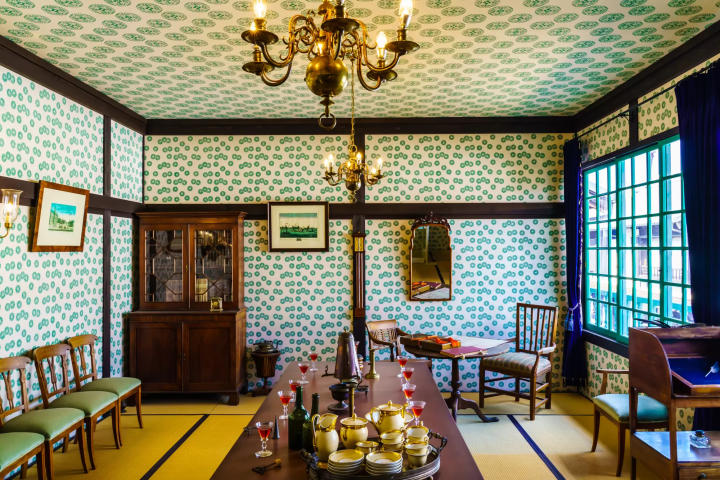
Photo by Pixta
During the years Japan limited its trade with other countries, Dejima was the only place that foreigners were allowed to stay. It was an artificial island built in 1636, but now it is connected to the surrounding areas.
In modern Dejima, the original buildings have been reconstructed. In those days, Dutch merchants used to enjoy a Western lifestyle in Japanese housing, and such scenery is also authentically re-created here. Visitors can change into kimono and take a walk, enjoy dining, or browse the souvenir shops handling items that can be bought only at Dejima.
Dejima
Dejimamachi, Nagasaki Map
2. Glover Garden
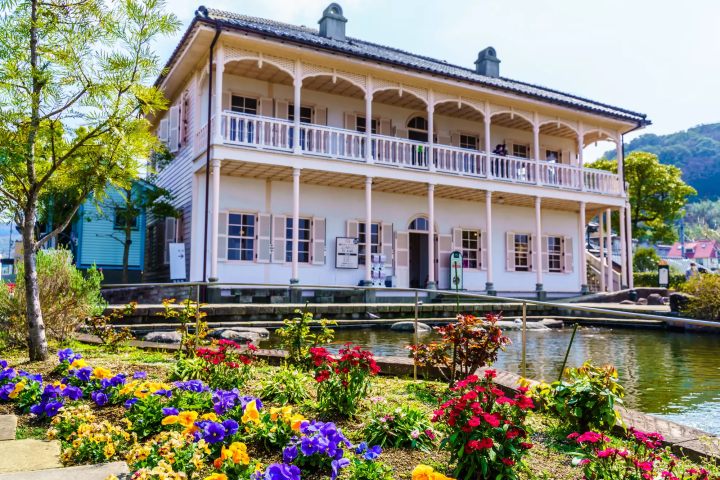
Photo by Pixta
There are six historic buildings on the grounds of Glover Garden, including the former Ringer Residence and the former Alt Residence. Some of the buildings were even relocated from other areas in Nagasaki. Visitors can enjoy the seasonal flowers in the garden, or take in the view of Nagasaki City and Port. They can also enjoy various events, or have their photographs taken in period clothing.
Although the Glover Garden sits at the top of a hill, it is equipped with escalators and elevators, so the facilities can be reached by everyone.
Glover Garden
Minamiyamatemachi, Nagasaki Map
3. Nagasaki Shinchi Chinatown
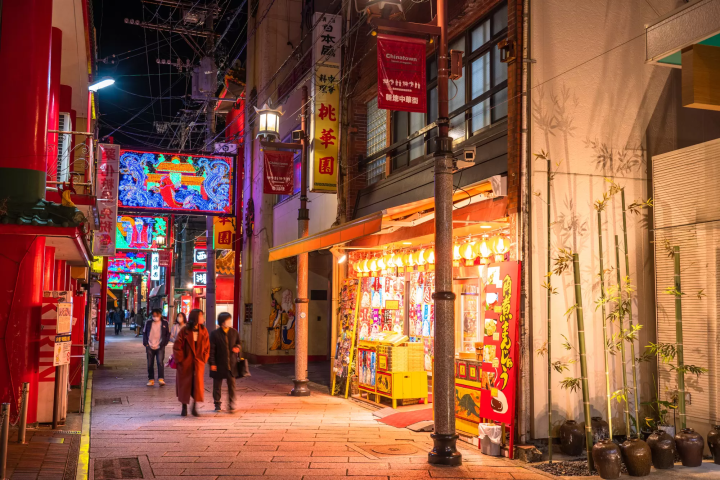
Photo by Pixta
Nagasaki Shinchi Chinatown, along with Yokohama and Kobe, is one of the three Chinatowns in Japan. Chinese-style gates stand at the four cardinal points, and Chinese restaurants and souvenir shops line up the streets.
Visitors should try champon (noodles with seafood, vegetables, and meat), which originated from this Chinatown and spread all over Japan, and sara-udon (thin udon noodles served on a saucer, topped with vegetables, meat and seafood), a local specialty. Be sure to taste these Nagasaki-style Chinese dishes which are made noodles, fresh seafood and vegetables.
The Nagasaki Lantern Festival is held here every winter for two weeks and attracts over a million visitors. Over 15 thousand colorful lanterns adorn the city center, and Chinese lion and dragon dance events are also held through the festival.
Nagasaki Shinchi Chinatown
Shinchimachi, Nagasaki Map
4. Peace Park

Photo by ShaSha Sonoda
The Peace Park is located to the north of the place where the atomic bomb exploded. The park was created in hopes that peace prevails on earth, and to pledge that such a tragedy would not be repeated.
The Peace Statue in this park stands at 9.7 meters in height. Both hands of the statue have their own meaning, as the right hand pointing to the sky represents the threat of atomic weapons, and the left hand pointing toward the horizon represents peace. The eyes of the statue are closed lightly, in prayer for the atomic bomb victims.
Fountain of Peace, a circular fountain built in memory of the victims who died in search of water, is another feature of this park.
Peace Park
9 Matsuyamamachi, Nagasaki Map
5. One-Legged Torii Arch At Sanno Shrine
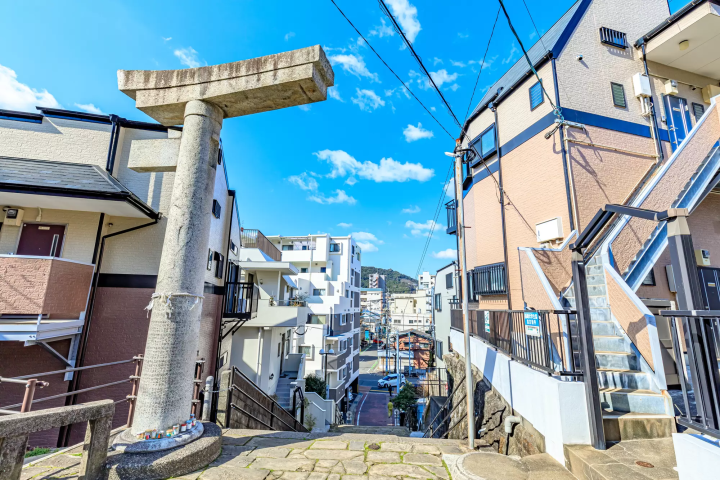
Photo by Pixta
Sanno Shrine in Nagasaki City is famous for its one-legged torii arch.
There were four torii arches at this shrine, located about 900 meters from the atomic bomb hypo-center, but only the ni-no-torii (*1), damaged and standing on a single pillar, remains. In 2013, this torii was appointed as a Registered Monument by the Japanese Government.
A camphor tree in the shrine grounds was also burned by the atomic bomb blast, but somehow managed to survive. This tree is regarded as a symbol of revival by the citizens.
Sanno Shrine
1 Chome-5 Sakamoto, Nagasaki Map
*1 Ni-no-torii: The second torii in the shrine grounds.
6. Oura Church

Photo by Pixta
Oura Church, built in 1865, is Japan's oldest Gothic-style church. It was constructed under the guidance of a French priest, and has an attractive white exterior.
The official name of this church is The Church of 26 Martyrs, as it is dedicated to the 26 saints executed by Toyotomi Hideyoshi. It is also famous for the discovery of the kakure Kirishitan (hidden Christian followers), who confessed their beliefs at this church.
The church is adorned with beautiful stained glass. The original, the oldest of its kind in Japan, was destroyed by the atomic bomb blast, and the current stained glass was made by the Roger Trading in Paris.
Oura Church
Minamiyamatemachi, Nagasaki Map
7. Chinzei Taisha Suwa Shrine

Photo by Pixta
Chinzei Taisha Suwa Shrine was rebuilt in 1625, after being burnt down.
It is said that the shrine grounds have mystical powers. The legend goes that Gan-kake Komainu (lion-dog statues who will grant your wishes), which dot the grounds, help to bring couples together and help students to pass entrance examinations. If you wish to stop smoking or drinking, they will also be of help, so many people visit this shrine.
There is also a Komainu Well, where it is believed that if you wash money with the water, its value will double and that drinking the water helps women with their childbirth.
Suwa Shrine is where the annual Nagasaki Kunchi Festival is held. This festival is a colorful and exciting fanfare for residents who gather atop the steps to watch the Dashimono performances.
To learn more - See the Nagasaki Kunchi Festival 2024: Schedule, Access, and Highlights.
Chinzei Taisha Suwa Shrine
18-15 Kaminishiyamamachi, Nagasaki Map
8. Nagasaki Atomic Bomb Museum
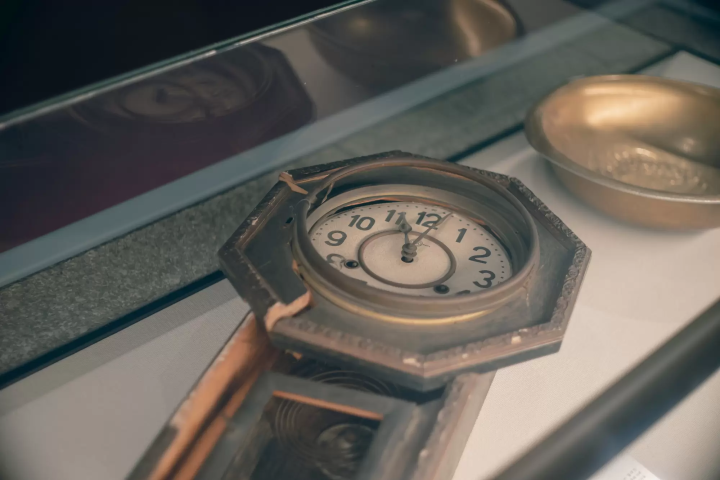
Photo by Pixta
The Nagasaki Atomic Bomb Museum displays materials not only about the aftermath, but also about how the bombing was organized, the history of nuclear weapons, the reconstruction of Nagasaki City and the hope towards a world without nuclear weapons.
The basement floor video room shows an animation with English subtitles about the citizens being exposed to radiation at the time, and a documentary about the history of nuclear weapons testing. The museum offers an opportunity for the younger generation to learn about nuclear weapons, and also about peace.
Nagasaki Atomic Bomb Museum
Nagasaki, 7-8 Hiranomachi Map
9. Oranda Zaka
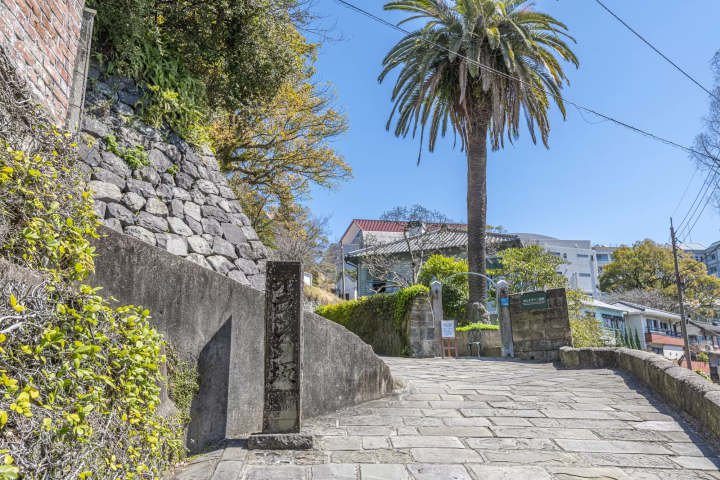
Photo by Pixta
Nagasaki citizens used to call all the non-Japanese people "Oranda-san" (Dutch people), and the slopes near the foreign settlement came to be called a "slope where the Oranda-san walks," so they were named Oranda Zaka (Dutch Slope). With the Western-style residences around this area, visitors may feel like they've wandered into another country.
Kassui Zaka, located near Kassui Gakuin school grounds, and the slope near Jokoiin Temple, are currently called Oranda Zaka. It might be fun to think about its history while taking a walk.
Oranda Zaka (Dutch Slope)
Nagasaki, 9 Ouramachi Map
10. Nagasaki Confucian Shrine
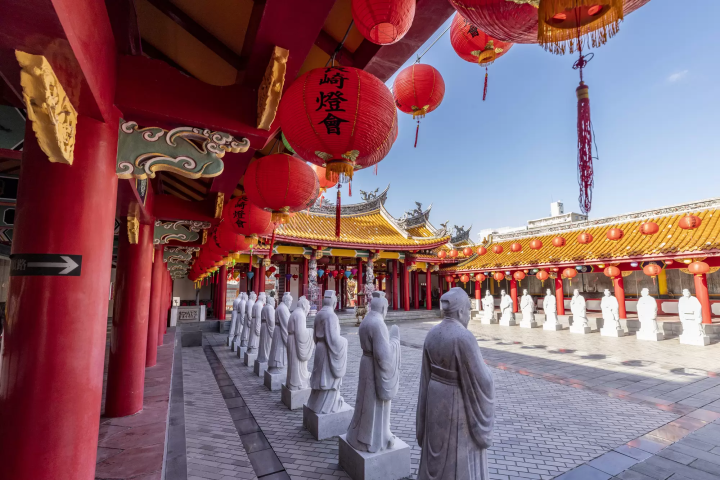
Photo by Pixta
The Nagasaki Confucian Shrine was built in 1893 by Chinese residents in Japan, with the support of the Chinese government, to worship Confucius, the founder of Confucianism. The colorful architecture is built in traditional Chinese style, with such features as the Hekisui Bridge and the Gimon Gate at the entrance.
The Historical Museum of China is also located at the shrine, displaying valuable materials. Please note that taking photographs is prohibited on the second and third floors of the museum.
Nagasaki Confucian Shrine
10-36 Ouramachi, Nagasaki Map
11. Nabekanmuriyama Park

Photo by Pixta
From the second gate of Glover Garden, it takes about ten minutes on foot to reach Nabekanmuriyama (Mount Nabekanmuri), which rises 169 meters above sea level. The view of the city and port of Nagasaki from the park observatory is breathtaking. The nighttime view was chosen as one of the New Three Best Nightscapes in the World and is certainly worth a look.
During the day, the Glover Residence, Gunkanjima, and the five component sites of a World Heritage (Sites of Japan’s Meiji Industrial Revolution) site can be seen from the observatory. If you plan to visit the park, be sure to wear shoes that are fit for an uphill climb.
Nabekanmuriyama Park
2 Chome-114-1 Izumo, Nagasaki Map
12. Mount Inasa
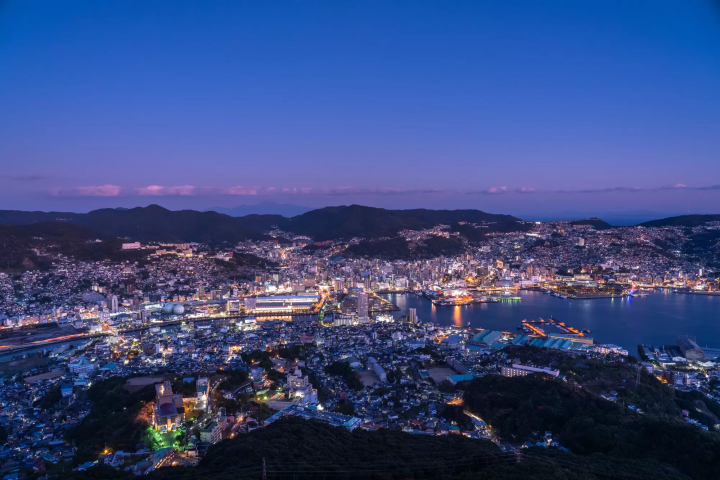
Photo by Pixta
Mount Inasa, rising above 333 meters above sea level, offers a panoramic view similar to Nabekanmuriyama Park. The nighttime view is praised as the "ten million dollar nightscape," and this spot is popular with couples for its romantic scenery. On a clear day, Unzen, Amakusa and even the Goto Archipelago can be seen from here.
Visitors can walk, use the ropeway, or drive up to the mountaintop. Please note that a parking fee is required.
Mount Inasa
Nagasaki, 364 Ohamamachi Map
13. Megane-Bashi

Photo by ShaSha Sonoda
This bridge, the first of its kind in Japan, spans the Nakajima River and is called Megane-Bashi (Spectacles Bridge), as the arch reflected on the river surface resembles a pair of spectacles.
Also, there are twenty heart-shaped stones embedded in the embankment. It is said that if you take a photograph with these stones in the background, your wish for love will be granted, so this area has become very popular.
Megane-Bashi (Spectacles Bridge)
Uonomachi, Nagasaki Map
14. Ryoma-dori
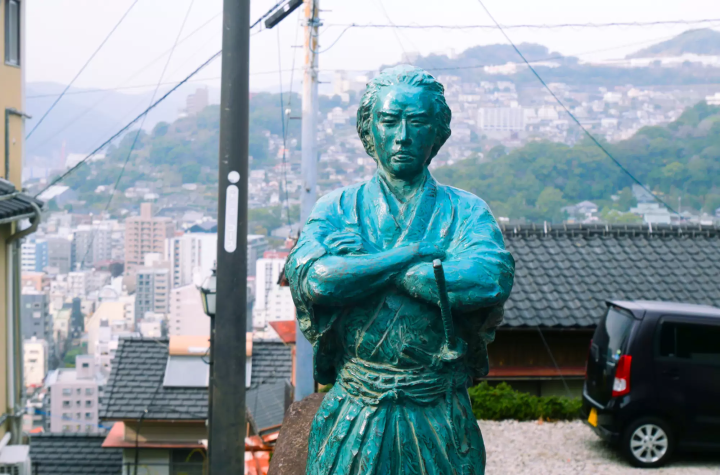
Photo by ShaSha Sonoda
The Ryoma-dori is a route dotted with stone steps that starts from a path between Jinsoji and Zenrinji temples, through Teramachi-dori past Kameyama Shachu Memorial, ending at Kazagashira Park.
The route is named after Sakamoto Ryoma, a popular figure in Japanese history and one of the heroes who contributed to the revolution that took place in the late Edo Period.
Ryoma, along with his colleagues, often walked this route, and the citizens of Nagasaki started to call it Ryoma-dori. A statue is set along the route, where many visitors stop by to take photographs.
Ryoma-dori (Sakamoto Ryoma Statue)
Nagasaki, 2 Chome-6-8 Irabayashi Map
15. Siebold Memorial Museum

Photo by ShaSha Sonoda
The Siebold Memorial Museum was built in honor of Philipp Siebold, who taught Rangaku (studies of Western sciences in the Edo period, using the Dutch language) at Nagasaki. The red brick building is built in the style of Siebold's house in Leiden, Holland.
Precious materials about Siebold's life and various items he used at the time are displayed in this museum. It might take at least an hour to study the displays carefully.
Siebold Memorial Museum
2 Chome-7-40 Narutaki, Nagasaki Map
16. Huis Ten Bosch
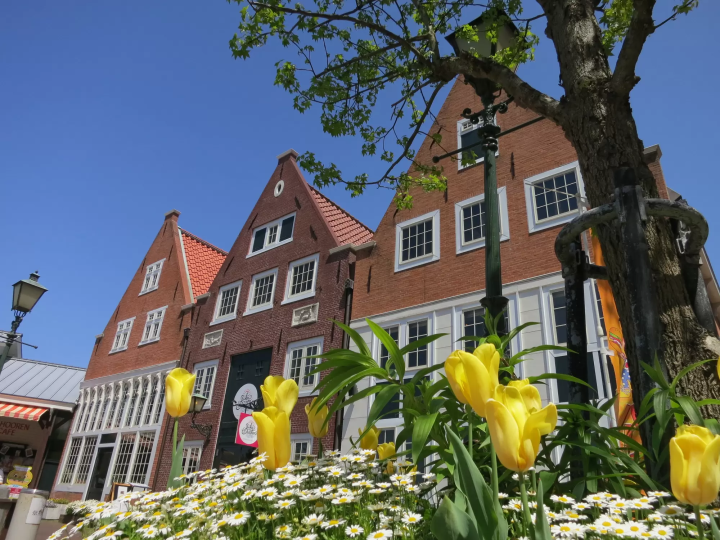
Photo by Pixta
Huis Ten Bosch, located in Sasebo, is a Dutch cityscape theme park. This is the largest theme park in Japan, welcoming the visitors with seasonal flowers.
There are also 44 pavilions offering all kinds of games, so it is fit for all members of the family. Live performances are regularly held, and some shows even draw a small crowd, so don't miss them.
The park is illuminated in the nighttime, and the visitors can enjoy the castle, rows of houses, flowers and canals bathed in beautiful lighting.
Huis Ten Bosch
Nagasaki, Sasebo, Huis Ten Bosch Machi Map
17. Gunkanjima
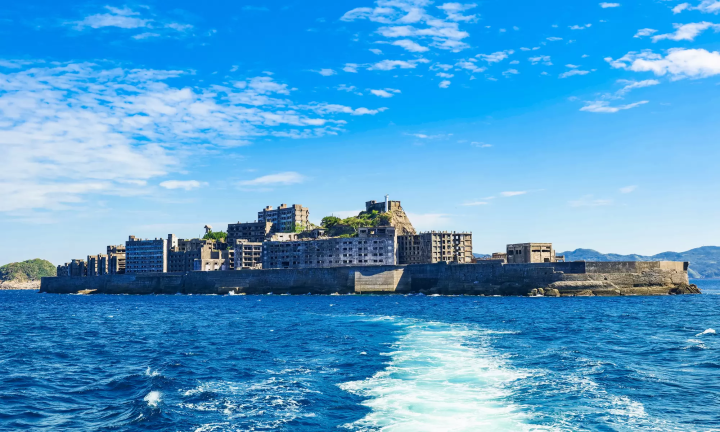
Photo by Pixta
Gunkanjima (Battleship Island) is a nickname for Hashima. This island was developed for coal-mining in 1870, and there were more than 5,000 people living here at its peak period. But once oil became the main energy source, the mine was closed in 1974, and the island became deserted.
A tour of Gunkanjima, where the participants can see the prototype of the Japanese high-rise concrete apartment buildings and the mining facilities has become popular, and more than 800,000 people have visited this island. In July of 2015, Gunkanjima was designated as a component site of a World Heritage (Sites of Japan’s Meiji Industrial Revolution) site.
Gunkanjima (Battleship Island)
Tokiwamachi, Nagasaki Map (Concierge Office)
18. Tenkaiho
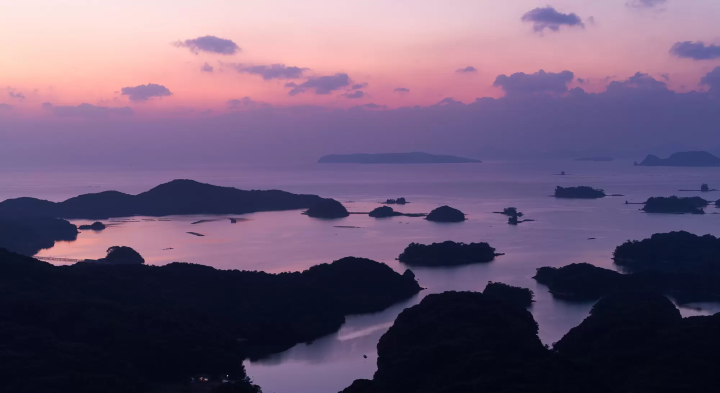
Photo by Pixta
From the Tenkaiho observatory in Sasebo, visitors can enjoy the view of the Kujuku-shima (Ninety-nine Islands). The sunset view is also spectacular.
The Kujuku-shima actually consists of 208 islands, spreading northward from the outskirts of Sasebo Port. The density of the islands is the highest in Japan. The visitors can also enjoy the view of colza flowers in spring, and cosmos flowers in autumn. The observatory is equipped with a parking lot.
Tenkaiho
Nagasaki, Sasebo, 399 Shimofunakoshicho Map
19. Hirado Dutch Trading Post
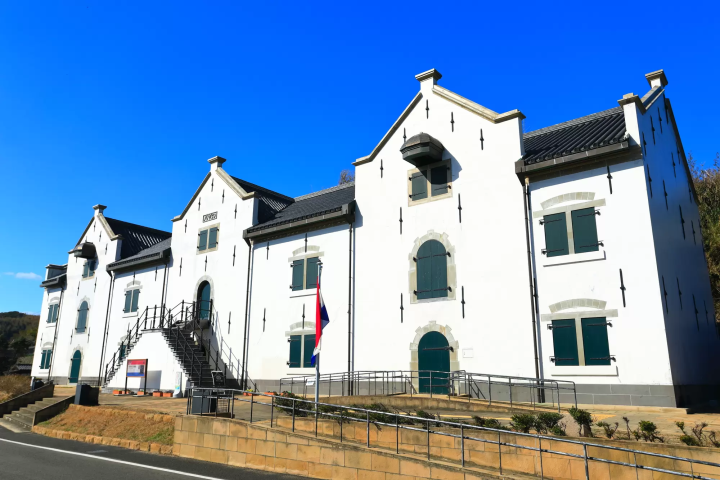
Photo by Pixta
The Hirado Dutch Trading Post, a re-creation of a building built in 1609, displays historical materials and also hosts various events. Originally built by the East India Company, it was destroyed in 1640, during the days when Christianity was banned in Japan.
Nautical instruments and items of daily use are displayed, along with pictures and books which describe how the people lived in those days. Workshops and public screenings are also held at this facility.
Hirado Dutch Trading Post
Nagasaki, Hirado, 2477 Okubocho Map
20. Unzen Onsen

This onsen (hot spring) contains sulfur and has a high acidic quality. It is said to be effective for skin diseases in general, with a beautifying effect.
Although there are various lodging facilities and sightseeing spots in the area, don't miss the museum displaying the vidro (a small bottle-shaped glass toy), and the yu-senbei workshop, where the participants can make Japanese rice crackers using the hot springs waters.
The area called Unzen Jigoku (Unzen Hell) is filled with steam and the smell of sulfur. A footbath and a communal bath is located in this area. Visitors can also take a stroll in the woods nearby.
Unzen Jigoku
Nagasaki, Unzen, 320 Obamacho Unzen Map
Read also
21. Misojien
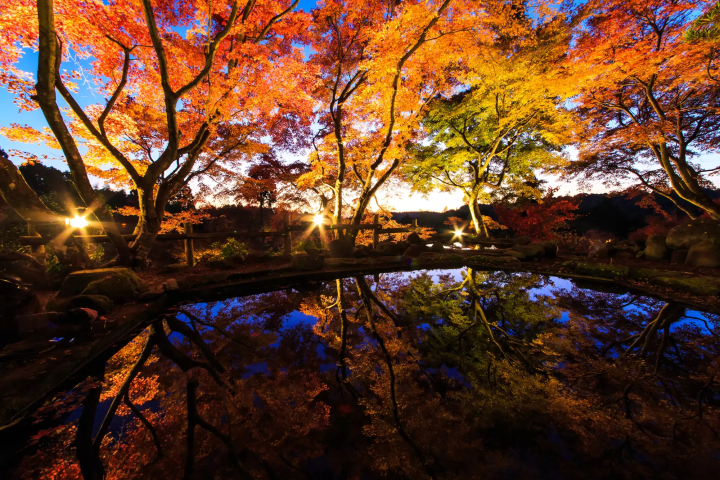
Photo by Pixta
Misojien is a garden in Unzen City, about 25,000 square meters in size, and famous for its autumn leaves. The trees are spread out vertically, so the visitors can enjoy the leaves changing colors over a long period of time.
The autumn leaves usually start in October. As the timing changes slightly every year, it would be best to check the information in advance. The trees are illuminated in nighttime, creating a fantastic sight not to be missed.
Misojien
Nagasaki, Unzen, Minamikisashi, 1870-4 Obamacho Map
22. Goto Archipelago

Photo by Pixta
The Goto Archipelago, which consists of more than 140 islands, is located 100 kilometers west of Nagasaki Port. During the days Christianity was banned in Japan, many hidden Christian followers relocated to these islands, and churches were built after the ban was lifted. These houses of prayer played an important part in history, and have become one of the highlights of this area.
The clear blue tropical ocean surrounding the islands, and various parks in the rich natural environment are also a part of the appeals of Goto Archipelago.
Osezaki Lighthouse
Nagasaki, Goto, Tamanouramachi Tamanoura Map
Guided Tours of Nagasaki
Nagasaki is one of Japan’s most popular destinations due to its many attractions, beautiful topography, and colorful cuisine.
To get the best out of your next trip to Nagasaki, we’ve compiled a list of recommended tours that will take you to some of Nagasaki’s most iconic locations and beyond the city limits to see some of the prefecture’s most breathtaking locations.
23. Romantic Nagasaki: Historical Charms and Seaside Views
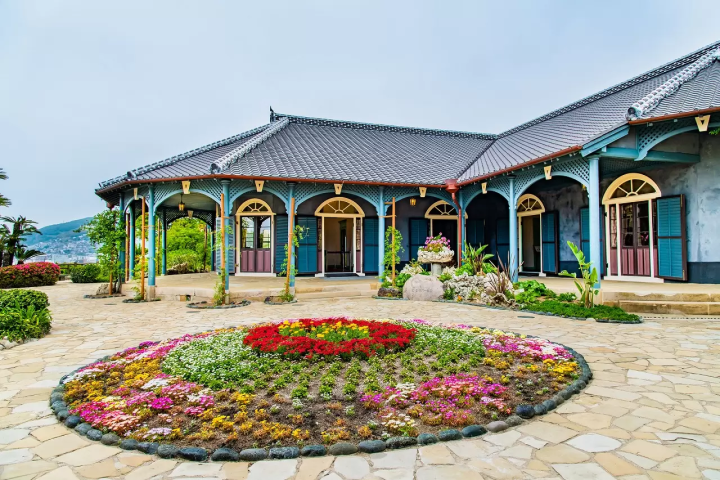
Photo by Pixta
This private tour takes small groups to four charming sights around Nagasaki City. Starting with a tour of the historic village of Dejima, guests have the opportunity to learn about the history of the former Dutch trading post and then take a relaxing stroll through the Seaside Park. The tour continues to Oura Church, a beautiful white church that sits at the top of a large hill and concludes at Glover Garden.
Combined with the seaside views and the romantic atmosphere of the city, this tour is a great way for small groups and couples to get acquainted with one of Japan’s most beautiful cities.
Duration: 3 hours
Number of participants: Up to 4
24. Walking Street Food Tour of Nagasaki
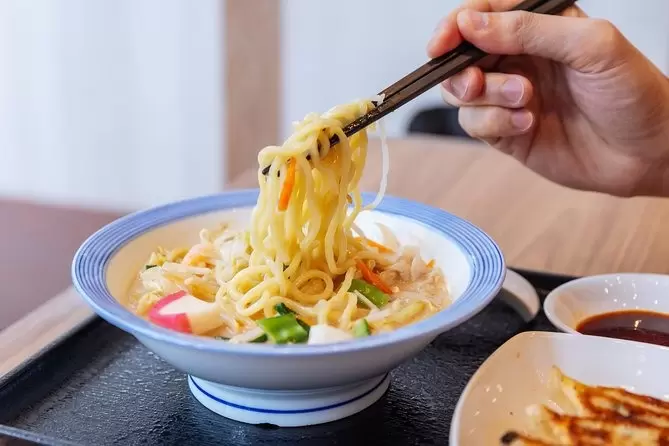
Picture courtesy of Viator
With so many mouth-watering options for local dishes, one of the best ways to navigate Nagasaki’s culinary scene is to try a walking tour. This tour entices guests with a chance to ‘eat like a local,’ taking patrons to Shinchi Chinatown, the Hamanomachi Arcade, and the Maruyama nightlife area.
This tour includes six to eight tastings from a few of Nagasaki’s best-hidden gems that are suited to the participants’ tastes and make for a fun addition to any itinerary.
Duration: 3 hours
Number of participants: Unlimited
25. Nagasaki: Explore Japanese Teas on a Tea Tour
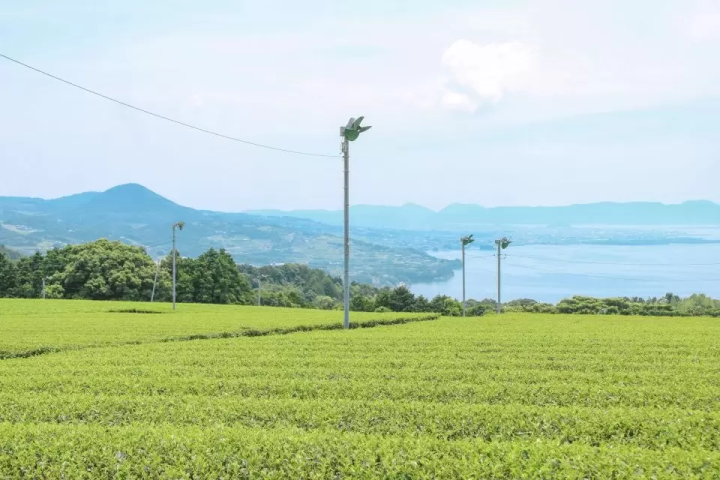
Picture courtesy of GetYourGuide
This tour takes place 40 minutes by car north of Nagasaki City in the town of Sonogi. Guests are invited to take a tour of a tea factory and try traditional Japanese sweets, also known as wagashi, while overlooking vast tea fields and breathtaking views of Omura Bay.
After exploring the tea factory and trying different teas, including a variety of green and black tea, guests will finish the tour by having lunch at a local restaurant. The best part of this tour? You will have the chance to make your very own tea!
Duration: 4 hours
Number of participants: Up to 6
Dining in Nagasaki
When it comes to searching for places to eat in Nagasaki, there’s no shortage of dining options in this culturally diverse prefecture.
Nagasaki has many famous regional dishes, known in Japanese as meibutsu. For visitors interested in trying dishes unique to this part of Japan, here is a list of recommended choices for dining in Nagasaki.
If you’re looking for a place to try meibutsu or regional dishes unique to Nagasaki and its historic city, or simply want to find out where all the locals get their morning coffee, here is a list of recommended choices for dining in Nagasaki.
26. Cafe Hirai
Located within five minutes of the bustle of Hamanomachi Arcade and the picturesque stone arches of Meganebashi, Cafe Hirai is an excellent place for all travelers, especially if you are an early riser or a night owl.
Open from 8:00 to 21:30, Cafe Hiraihas friendly English-speaking staff and a simple menu consisting of an assortment of hot sandwiches and desserts with a variety of fruit. Offering juice, coffee, tea (and alcoholic beverages in the evening), this piece of local history has been serving up authenticity for over a decade and is a great way to experience Nagasaki’s cafe culture.
Cafe Hirai
Hours: 8:00 - 21:30
Address: 6-1 Edomachi, Nagasaki, 850-0861 Map
27. Menya Always
You can’t go wrong with selecting a good ramen shop in Nagasaki. However, if you’re curious about where the locals go, most will likely say that their favorite is a store called Menya Always.
Specializing in Kyushu-style pork-broth and lemon-flavored ramen, also known as tonkotsu, and tsukemen, Menya Always is a quick meal that is delicious and affordable. With its convenient hours and mouth-watering side dishes, travelers can find this ramen shop in two very central locations: one near Meganebashi (Spectacles Bridge) and another inside the Cocowalk Mall.
Menya Always
Hours: 11:00 - 22:00
Address: 5-22 Yorozuyamachi, Nagasaki, 850-0852 (Meganebashi) Map
Website: https://menya-always.com/
28. Kozanronhonbu
Kozanrohonbu is located in the heart of Nagasaki Shinchi Chinatown and is the best place to try champon, one of Nagasaki’s most famous regional dishes.
This dish comes from the Fujian region of China and is an assortment of seafood and noodles that are served in a hearty broth. Although one can find many variations of champon throughout Japan, the first bowl of champon is said to have been served in Nagasaki in the year 1899.
Today, you can try this heritage dish by visiting Nagasaki Shinchi Chinatown. Please note that Kozanronhobu is a very popular restaurant that does not take reservations, so be sure to arrive early and well before the afternoon closing time.
Kozanronhonbu
Hours: Lunch 11:30 - 15:00, Dinner 17:00 - 20:00
Address: 13-16 Shinchimachi, Nagasaki, 850-0842 Map
29. Nagasaki Dejima Wharf
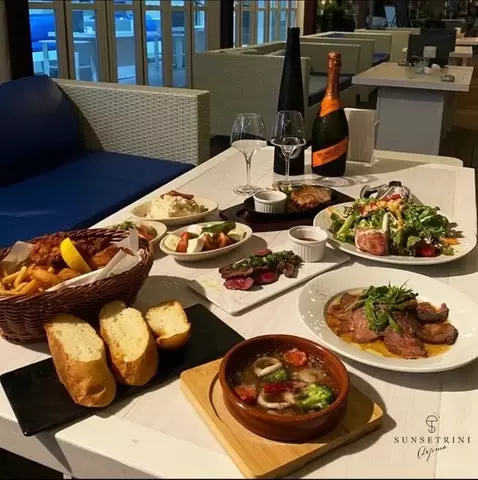
Sunsetrini Dejima Wharf. Picture courtesy of PR Times
Located along the Nagasaki Dejima Wharf, several restaurants offer interior and exterior dining options steps away from Nagasaki’s scenic waterfront.
Beneath the cozy lights of these restaurants, patrons can relax and watch the ships enter and exit Nagasaki’s port and may enjoy an afternoon or evening walk along the boardwalk before ending the day with a stroll through Seaside Park.
To learn more about the dining options available, please visit the Nagasaki Dejima Wharf official website.
Nagasaki Dejima Wharf
Address: 1-1 Dejimamachi, Nagasaki Map
30. Japanese Cuisine and Steak Nagasaki YoHira
Tucked away in a quiet neighborhood of Nagasaki, not far from the exciting nightlife district of Shianbashi, is Nagasaki YoHira. A popular option for wedding guests and annual corporate end-of-the-year parties, this high-end restaurant offers regular customers the option to try two courses that serve Japanese dishes, also known as kaiseki cuisine.
What makes Nagasaki YoHira special is that guests are surrounded by traditional Japanese aesthetics and views of a luscious Japanese garden.
Please note that Japanese YoHira requires reservations in advance.
Nagasaki YoHira
Hours: 11:30 - 15:00, 17:00 - 22:00
Address: 5-7 Funadaikumachi, Nagasaki Map
Website: http://www.nagasaki-wasyoku-yohira.com/
Accomodation in Nagasaki
Nagasaki offers excellent hotels for every budget, from hostels to resorts. Below we introduce three of them. Browse through Booking.com for more!
Almas Guest House
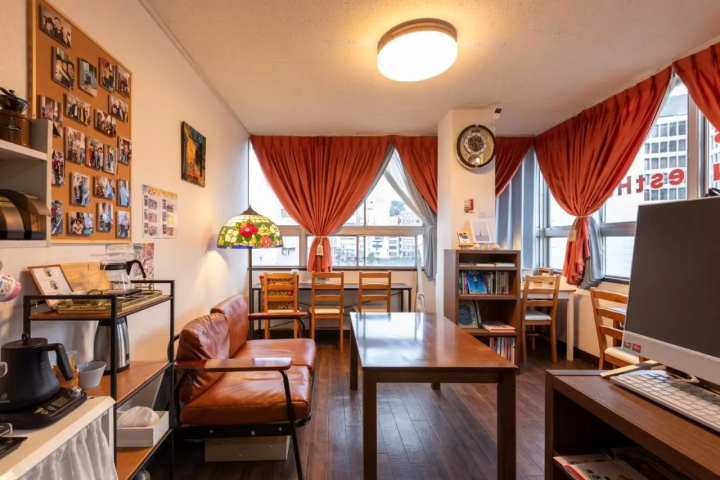
Picture courtesy of Booking.com
Almas Guest House is a dormitory-style hostel that is the perfect option for budget-friendly travelers. This hostel with English-speaking staff is situated across the street from Nagasaki’s Dejima. It is within walking distance of many of Nagasaki City’s most famous attractions.
In addition to the gender-separated facilities, the check-in area has a cozy and inviting atmosphere, which makes this hostel the perfect option for remote workers and those looking to spend the night in a comfortable accommodation that isn’t too hard on the wallet.
Nagasaki Marriott Hotel
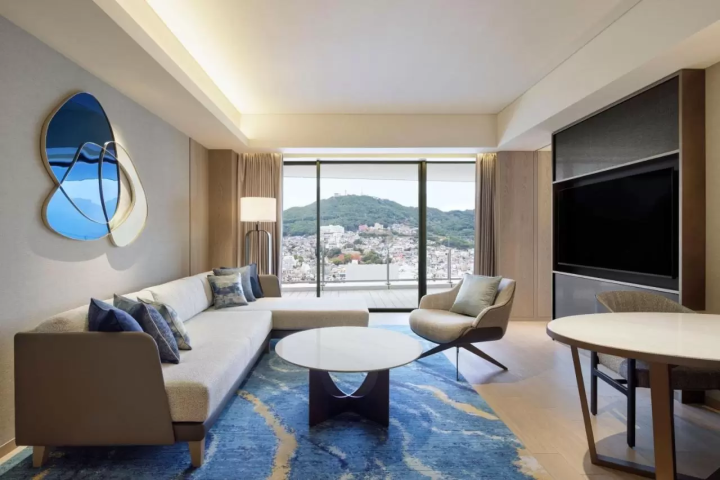
Picture courtesy of Booking.com
The Nagasaki Marriott Hotel is a five-star accommodation that offers arguably one of the best high-end experiences in Nagasaki City.
Towering above the recently renovated AMU Plaza and JR Nagasaki Station, the Nagasaki Marriott Hotel provides guests with front-row seats to some of Nagasaki’s best scenery, including its famous slopes, Mount Inasa, and a bird's-eye-view of Nagasaki Port.
With meeting event spaces, a 24-hour fully equipped fitness center, and more, the Nagasaki Marriott Hotel is a must-try luxury accommodation.
i+Land Nagasaki
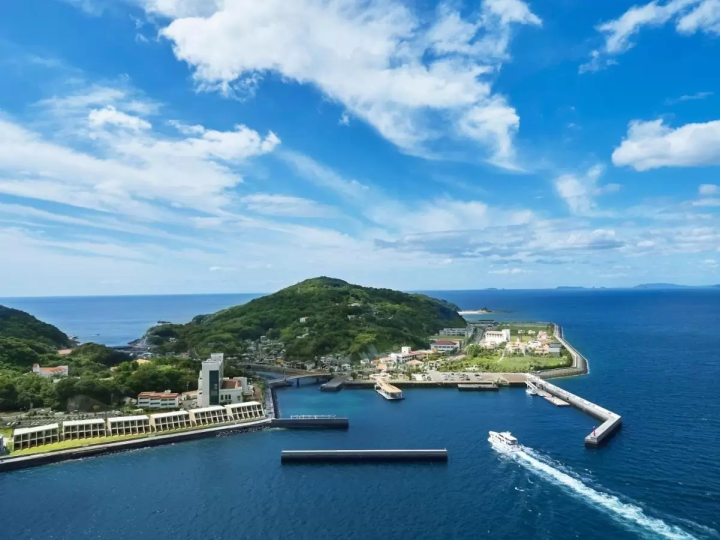
Picture courtesy of Booking.com
For travelers looking for an exciting accommodation set on an island,i + Land Nagasaki is a great option that is still accessible from Nagasaki City.
I + Land Nagasaki rests on the island of Iojima, which is accessible via a free shuttle bus (reservation required) which awaits guests at the JR Nagasaki Station taxi area. For a more exciting route, a high-speed boat from Nagasaki Port to Iojima costs only 710 yen for a one-way trip is also available.*
This resort is the best choice for travelers looking to book their next summer island getaway, with several attractions and events that are fun to enjoy year-round.
*Round-trip tickets are only available for groups/student groups
Enjoy Your Trip To Nagasaki!
All the places introduced above are the major sightseeing destinations in Nagasaki. The area has many other charms waiting to be discovered! We hope our guide to Nagasaki will be of help when you visit this region.
All the information above is current as of June 2024 and was gathered from official websites. Please keep in mind that they are subject to change.
Read also
This is the official account of MATCHA's editorial department. Our articles feature useful travel information for visitors to Japan, from how-to guides to recommended places to visit.








![[Nagasaki] Produced by a world-renowned garden designer! Introducing “Mihara Garden”](https://resources.matcha-jp.com/resize/200x2000/2024/02/29-169576.webp)
![[Nagasaki] Recommended sightseeing spots and carefully selected rental cars! A journey in harmony between history and landscape](https://resources.matcha-jp.com/resize/200x2000/2024/02/09-166103.webp)







































![[2026] Top 5 Strawberry Picking Spots in Tokushima, Naruto| Farms and Access Guide for January to May](https://resources.matcha-jp.com/resize/720x2000/2025/03/06-227165.webp)



